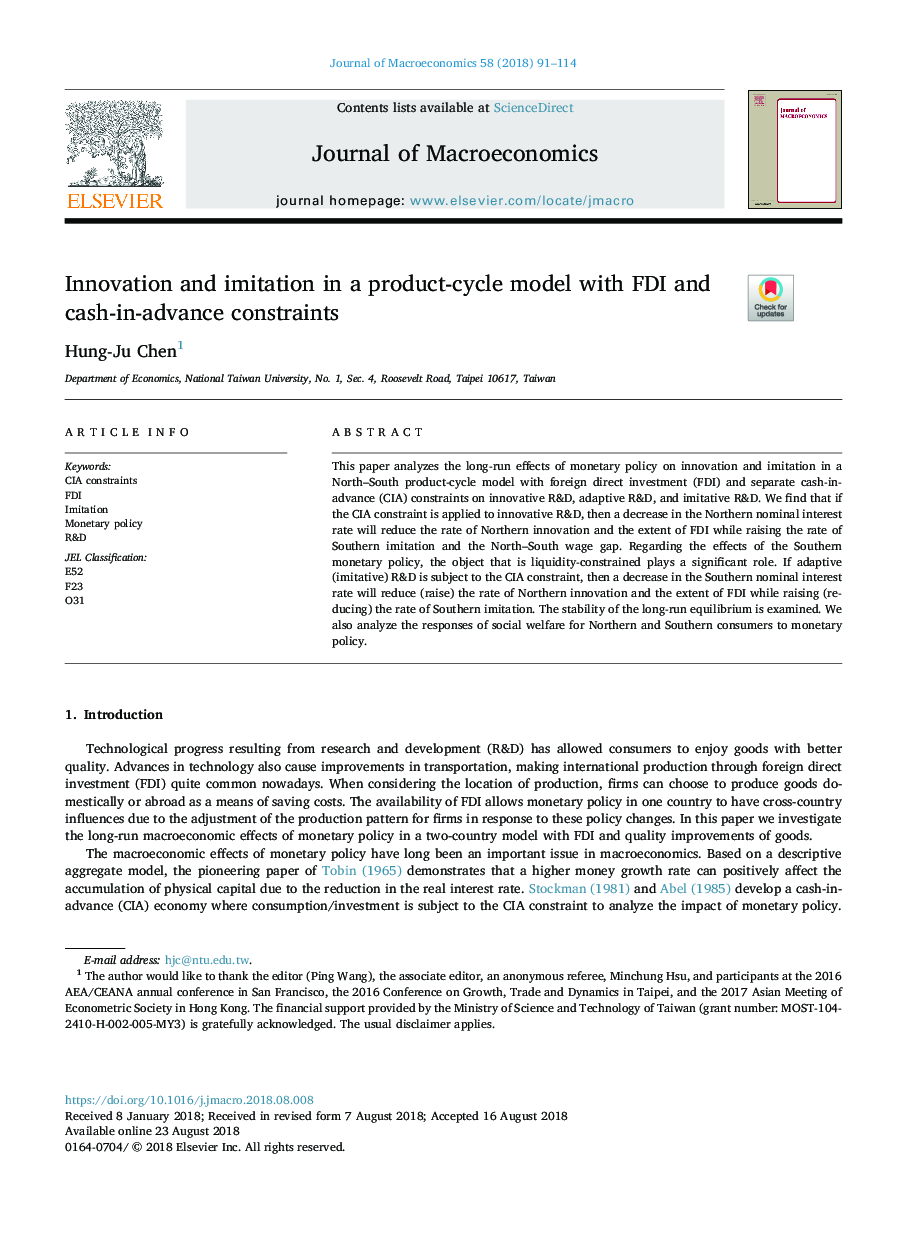| Article ID | Journal | Published Year | Pages | File Type |
|---|---|---|---|---|
| 10140487 | Journal of Macroeconomics | 2018 | 24 Pages |
Abstract
This paper analyzes the long-run effects of monetary policy on innovation and imitation in a North-South product-cycle model with foreign direct investment (FDI) and separate cash-in-advance (CIA) constraints on innovative R&D, adaptive R&D, and imitative R&D. We find that if the CIA constraint is applied to innovative R&D, then a decrease in the Northern nominal interest rate will reduce the rate of Northern innovation and the extent of FDI while raising the rate of Southern imitation and the North-South wage gap. Regarding the effects of the Southern monetary policy, the object that is liquidity-constrained plays a significant role. If adaptive (imitative) R&D is subject to the CIA constraint, then a decrease in the Southern nominal interest rate will reduce (raise) the rate of Northern innovation and the extent of FDI while raising (reducing) the rate of Southern imitation. The stability of the long-run equilibrium is examined. We also analyze the responses of social welfare for Northern and Southern consumers to monetary policy.
Related Topics
Social Sciences and Humanities
Economics, Econometrics and Finance
Economics and Econometrics
Authors
Hung-Ju Chen,
